Dan Barker's Blog, page 8
September 29, 2019
Sustained, but Never Set Apart
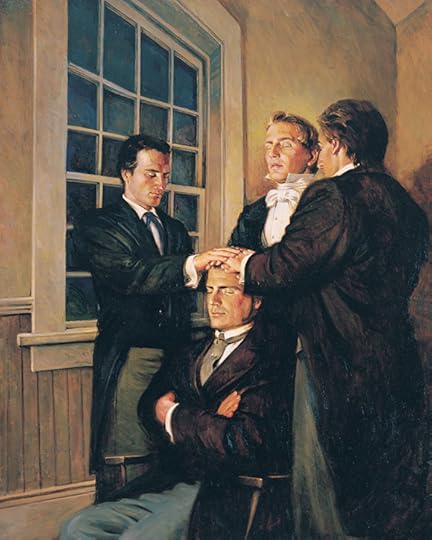 http://lds.org/bc/content/ldsorg/chur...
http://lds.org/bc/content/ldsorg/chur...Which General Authority was sustained as a first counselor in the first presidency, but never set apart?a. Henry B. Eyringb. Joseph F. Smithc. Gordon B. Hinckleyd. George A. SmithYesterday’s answer:C When Joseph Smith met Brigham for the very first timeFrom the life of Brigham Young: Several anxious hours later Brigham stood gazing at a handsome, muscular man almost five years his junior, engaged in chopping firewood. “Here my joy was full at the privilege of shaking the hand of the Prophet of God, and [I] received the sure testimony, but the Spirit of prophecy, that he was all that any man could believe him to be, as a true Prophet.” This was the beginning of a lifelong love of profound depth that Brigham Young had for the Prophet Joseph Smith. He once exclaimed, “I feel like shouting hallelujah, all the time, when I think that I ever knew Joseph Smith, the Prophet.” At a meeting later that day Brigham arose and spoke in tongues; it was the first time the brethren present had heard the true gift of tongues. Afterward Joseph made a remarkable prophecy: “The time will come when brother Brigham Young will preside over this Church.”Flake, Lawrence R., Prophets and Apostles of the Last Dispensation, (Provo, Utah: Religious Study Center, Brigham Young University, 2001), 23-24.
Published on September 29, 2019 03:30
September 28, 2019
“He Will Preside Over the Church”
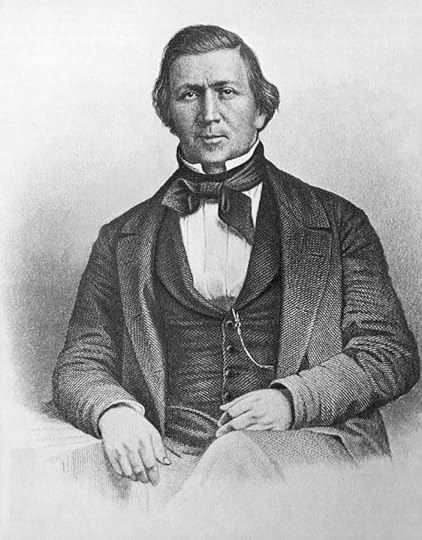 Brigham Younghttp://images.fineartamerica.com/imag...
Brigham Younghttp://images.fineartamerica.com/imag...At what point in time did Joseph Smith know that Brigham Young would eventually lead the Church?a. When Brigham was called to be an apostleb. When Brigham Young dedicated the attic of the Nauvoo Templec. When Joseph Smith met Brigham for the very first timed. When Brigham Young was called on a mission to BritainYesterday’s answer:A A doctor’s prognosis that she wouldn’tLangley Allgood Bailey was born March 27, 1838 in Whitwick England. She was 18 years old when she journeyed with the Martin Company. On the way she became very ill and was told by a doctor that she “must not go another step or [she] would die and be buried on the roadside.” F. D. Richards and C.H. Wheelock administered to her and promised her that she would live to reach the valley.One morning she started out ahead of the company, in her words, “. . . to get away, lay down under a sagebrush and die. I saw my father and mother and my cart pass by, I stretched out to die; just then a voice said ‘your mother is hunting you jump up.’ I saw mother in haste coming towards me wanting to know what had gone wrong with me. I told her I had planned to lay down and die. I felt it was too much to pull me on the cart, at the same time have as much luggage they could manage, [she] scolded me a little. She reminded [me] what I was promised by apostle Franklin D. Richards. I rode on a cart until the teams from the valley met us.” Stewart E. Glazier and Robert S. Clark, Journey of the Trail (Salt Lake City: The Church of Jesus Christ of Latter-day Saints, 1997), 185-186.
Published on September 28, 2019 03:30
September 27, 2019
A Promise Under the Hands of the Priesthood
 https://s-media-cache-ak0.pinimg.com/...
https://s-media-cache-ak0.pinimg.com/...Langley Allgood Bailey was promised in a Priesthood blessing that she would make it to the Salt Lake Valley, in spite of what?a. A doctor’s prognosis that she wouldn’tb. Struck by lightningc. Kidnapped by the Nativesd. Trampled in a buffalo stampedeYesterday’s answer:C Caused by weather while with the Martin Handcart CompanyNovember 1856, near Martin’s Cove, Martin Company, Margaret Pucell: Samuel and Margaret Pucell and their two daughters were in the Martin Company. On the way Margaret became ill, so had to ride in the handcart part of the way. Her husband grew so weary and weakened from the lack of food that this additional burden caused him to slip and fall one day as he crossed a river. Having to travel in the cold, wintry weather with wet clothing he, too, became ill and died from hunger and exposure. His wife died five days later, leaving ten-year-old Ellen and fourteen-year-old Maggie orphans. . . . Many died and many others suffered from frozen limbs, and among them the Pucell girls, both having balky frozen feet and legs. . . . When shoes and stockings were removed from the girls’ feet the skin came off. Although Maggie’s legs were frozen, she would not allow them to do more than scrape the flesh off the bones, but Ellen’s were so bad they had to be amputated just below the knees. The girls stayed in Salt Lake waiting for their wounds to heal. Later they lived in Parowan for a while, then on the Cedar, where both married and reared families, although Ellen Pucell (Unthanks) went on her knee-stubs all her life. Stewart E. Glazier and Robert S. Clark, Journey of the Trail (Salt Lake City: The Church of Jesus Christ of Latter-day Saints, 1997), 96.
Published on September 27, 2019 03:30
September 26, 2019
Walking on Her Knees
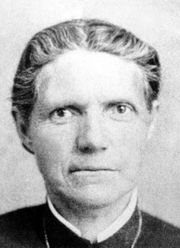 Ellen Pucell Unthankhttp://wiki.hanksplace.net/images/thu...
Ellen Pucell Unthankhttp://wiki.hanksplace.net/images/thu...Why did early pioneer Ellen Pucell Unthanks have to walk on her knees throughout her life?a. She was crippled at birthb. Caused by weather fleeing Johnston’s armyc. Caused by weather while with the Martin Handcart companyd. Caused by lack of nourishment in her first few years in the valley Yesterday’s answer:D The amount of personal property that had to be left behindJuly, 1856, Iowa City, Martin Company, John Jaques Journal: As only a very limited amount of baggage could be taken with the handcarts, during the long stay on the Iowa City camping ground, there was a general lightening of such things as could best be done without. Many things were sold cheaply to residents of that vicinity, and many more things were left on the camping ground for anybody to take or leave at his pleasure. I was grievous to see the heaps of books and other articles thus left in the sun, rain, and dust, representing a respectable amount of money spent therefor in England, but thenceforth, a waste and dead loss to the proper owners. Stewart E. Glazier and Robert S. Clark, Journey of the Trail (Salt Lake City: The Church of Jesus Christ of Latter-day Saints, 1997), 46.
Published on September 26, 2019 03:30
September 25, 2019
What a Waste!
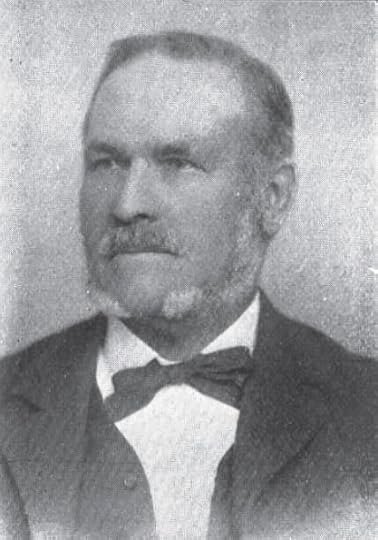 John Jaqueshttps://upload.wikimedia.org/wikipedi...
John Jaqueshttps://upload.wikimedia.org/wikipedi...According to John Jacques, member of the Martin Handcart company, what did he state was a waste at the campground in Iowa City as the Saints were preparing to journey in handcarts to the Salt Lake Valley?a. Lazy men not helping to construct hand cartsb. Lazy women not helping to sew tentsc. Lazy youth not willing to help their parentsd. The amount of personal property that had to be left behind because there was no room to takeYesterday’s answer:D 2001856, Iowa City, Iowa, Willie Company, William James History: It was now six weeks since the companies had arrived at Camp Iowa, Emma James remembers. “We were called together in a meeting one evening and there was quite a bit of guessing as to the reason for it. It was a large group that gathered, circling the leader. The meeting was called to order, one of the brethren offered prayer, then we were told for the reason for the counseling. We were told it was 300 miles to Council Bluffs which was the actual place for starting the trek and that was just a mile to what we had to go to reach the valley. We would have carts, such as they were, but the season was late and bad weather could prove dangerous to us if we were in the mountains. Even if we had no trouble, we would be late getting to Utah. There had been much talk of these dangers by experienced men in the camp, but I think that the thing which I will remember for the rest of my life and wish that we had heeded was said by a Brother Savage. With tears streaming down his checks he pleaded with the people, ‘Brothers and sisters, wait until spring to make this journey. Some of the strong may get through in case of bad weather, but the bones of the weak and old will strew the way.’ I can remember that when he finished there was a long time of silence. I was frightened. Father looked pale and sick. I turned to Mother to see what she was thinking, and all that I saw was her old determined look. She was ready to go on tomorrow. There were many other like her. We really didn’t have much choice. There was no work here for us to keep ourselves through the winter, and our family had to live. ‘We must always put our trust in the Lord’, said Mother, and that was that. “There was nearly one hundred people of the companies who decided to winter over and come in the spring. The majority voted to go on as soon as everything was ready. July 15th, under the direction of Captain Willy, with 500 people, 120 carts and four or five wagons we left Camp Iowa for an outfitting station at Council Bluffs. It was great fun pulling empty carts and imitating the wagon drivers with their ‘eeh’ and hah.’”Additional Information:July, 1856 Iowa City, Willie Company, John Chislett Journal: Levi Savage stated that they “could not cross the mountains with a mixed company of aged people, women, and little children, so late in the season without much suffering, sickness, and death.” He therefore advised going into winter quarters without delay. Savage was voted down, the majority being against him. He then added: “Brethren and sisters, what I have said I know to be true; but seeing you are to go forward, I will go with you, will help you all I can, will work with you, will rest with you, will suffer with you, and, if necessary, I will die with you. May God in his mercy bless and preserve us.”Stewart E. Glazier and Robert S. Clark, Journey of the Trail (Salt Lake City: The Church of Jesus Christ of Latter-day Saints, 1997), 30-31.
Published on September 25, 2019 03:30
September 24, 2019
“When the Rubber hits the Pavement”
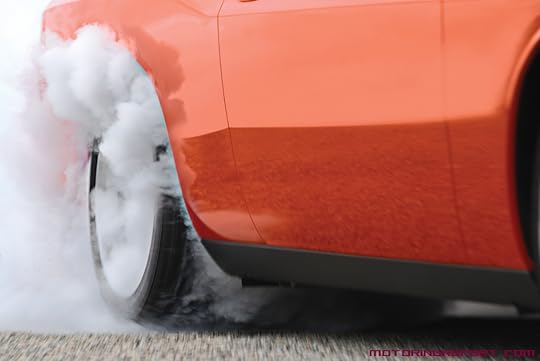 http://thenewagenda.net/wp-content/up...
http://thenewagenda.net/wp-content/up...Every now and then you might hear the above phrase mentioned. Stated, it means that when whatever happens, happens, that things are going to take off. The Willie Handcart company was in the same situation. A meeting was held to discuss if the handcart company should continue so late in the season, even though there were those with experience that thought it was foolish. Regardless, the vote was to proceed, but not all went. How many people voted to continue the next spring?a. 50b. 100c. 150d. 200Yesterday’s answer:B Wilford WoodruffFrom the life of Wilford Woodruff: He was the father of sixteen daughters and seventeen sons, including Apostle Abraham Owen Woodruff. He was a father-in-law of President Lorenzo Snow. Richard S. Van Wagoner and Steven C. Walker, A Book of Mormons, (Salt Lake City: Signature Books, 1982), 396.
Published on September 24, 2019 03:30
September 23, 2019
Lorenzo’s Father-in-law
 Lorenzo Snowhttp://mormonhistoryguy.files.wordpre...
Lorenzo Snowhttp://mormonhistoryguy.files.wordpre...Who was Lorenzo Snow’s father-in-law?a. Brigham Youngb. Wilford Woodruffc. Parley P. Prattd. Sidney RigdonYesterday’s answer:A 2From the life of Reed Smoot: Smoot’s 1880 mission call was rescinded because of his responsibilities with the Provo Co-op. His 1884 call was rescinded when he became superintendent of Provo Woolen Mills.After five years as second counselor in Provo’s Utah Stake, he was called on a mission to Liverpool, England, where he worked in the mission office under President Brigham Young, Jr. He returned to Provo in 1891 to resume management of the woolen mills when his father was taken seriously ill. Richard S. Van Wagoner and Steven C. Walker, A Book of Mormons, (Salt Lake City: Signature Books, 1982), 315.
Published on September 23, 2019 03:30
September 22, 2019
Reed Smoot’s Rescinded Missions
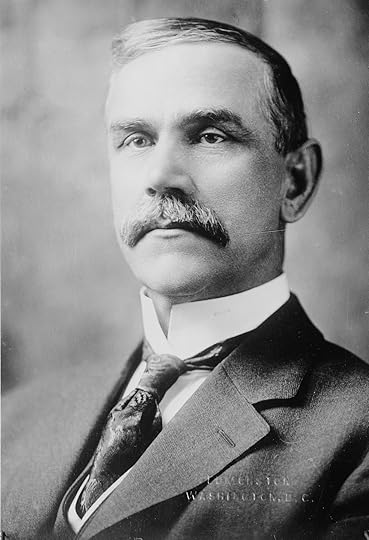 Reed Smoothttps://upload.wikimedia.org/wikipedi...
Reed Smoothttps://upload.wikimedia.org/wikipedi...How many missions were rescinded for Reed Smoot?a. 1b. 2c. 3d. 5Yesterday’s answer:A George A. SmithFrom the life of George A. Smith: Called to be Church historian and recorder at the death of Willard Richards. His grandfather described fourteen-year-old George as “a rather singular boy. When he comes here, instead of going to play as the rest of my grandchildren do, he comes into my room and asks me questions about what occurred seventy or eighty years ago.”Smith’s memory was legendary. Brigham Young referred to him as a “cabinet of history,” and Orson F. Whitney described him as “a walking encyclopedia of general information.” His greatest contribution to Mormon history was completing the multi-volume History of the Church begun by Joseph Smith.Richard S. Van Wagoner and Steven C. Walker, A Book of Mormons, (Salt Lake City: Signature Books, 1982), 273.
Published on September 22, 2019 03:30
September 21, 2019
“A Walking Encyclopedia”
 http://www.slate.com/content/dam/slat...
http://www.slate.com/content/dam/slat...Orson F. Whitney referred to this man as “a walking encyclopedia.” Who was the man?a. George A. Smithb. Heber C. Kimballc. Joseph F. Smithd. David O. McKayYesterday’s answer:B B. H. RobertsFrom the life of B. H. Roberts: During World War I Roberts served, at the age of sixty, as chaplain of the 145th Utah Light Field Artillery in France.During an influenza epidemic near Bordeaux, “he was unafraid of the vicious malady. He never hesitated to go into the sick rooms and never seemed to worry about the risk of getting the disease himself. Many times, especially when visiting the Latter-day Saint men, he would administer to them and the blessings Brother Roberts would give were tremendous and would kindle encouragement and hope to the men.”Richard S. Van Wagoner and Steven C. Walker, A Book of Mormons, (Salt Lake City: Signature Books, 1982), 245-246.
Published on September 21, 2019 03:30
September 20, 2019
Chaplain during WW I
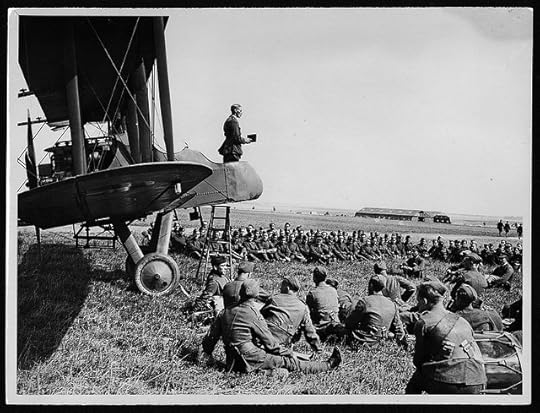 https://pietistschoolman.files.wordpr...
https://pietistschoolman.files.wordpr...Which General Authority served as a U.S. army chaplain during WWIa. Heber J. Grantb. B. H. Robertsc. Mattias F. Cowleyd. Anthon H. LundYesterday’s answer:D Jesse KnightFrom the life of Jesse Knight: Prospecting on the east side of Godiva Mountain near Eureka, Utah, Knight sat down under a tree to rest. Suddenly he heard a voice: “This country is here for the Mormons.” A short time later, he dreamed about a rich vein of ore. The location was indelibly impressed on his mind, and when he went there, it was exactly as he had dreamed. When he offered Jacob Roundy a partnership in the mine, the experienced Roundy replied, “I do not want an interest in a damned old humbug like this.” “Humbug” struck Knight’s fancy, and when a 150-foot shaft was completed, he christened it “Humbug Mine.”Two months later Knight and his partners struck a fabulously rich vein of lead and silver ore. Removing the first wheelbarrow of ore himself, Knight declared, “I have done the last day’s work that I ever expect to do where I take another man’s job from him. I expect to give employment and make labor from now on for other people.”“Uncle Jesse” then proceeded to make good a promise he had made to himself a few years before. He paid his back tithing, with compound interest. President Heber J. Grant later disclosed that Knight paid a lifetime tithe of $680,000—more than the entire Church tithes collected in 1893.Richard S. Van Wagoner and Steven C. Walker, A Book of Mormons, (Salt Lake City: Signature Books, 1982), 147.
Published on September 20, 2019 03:30



